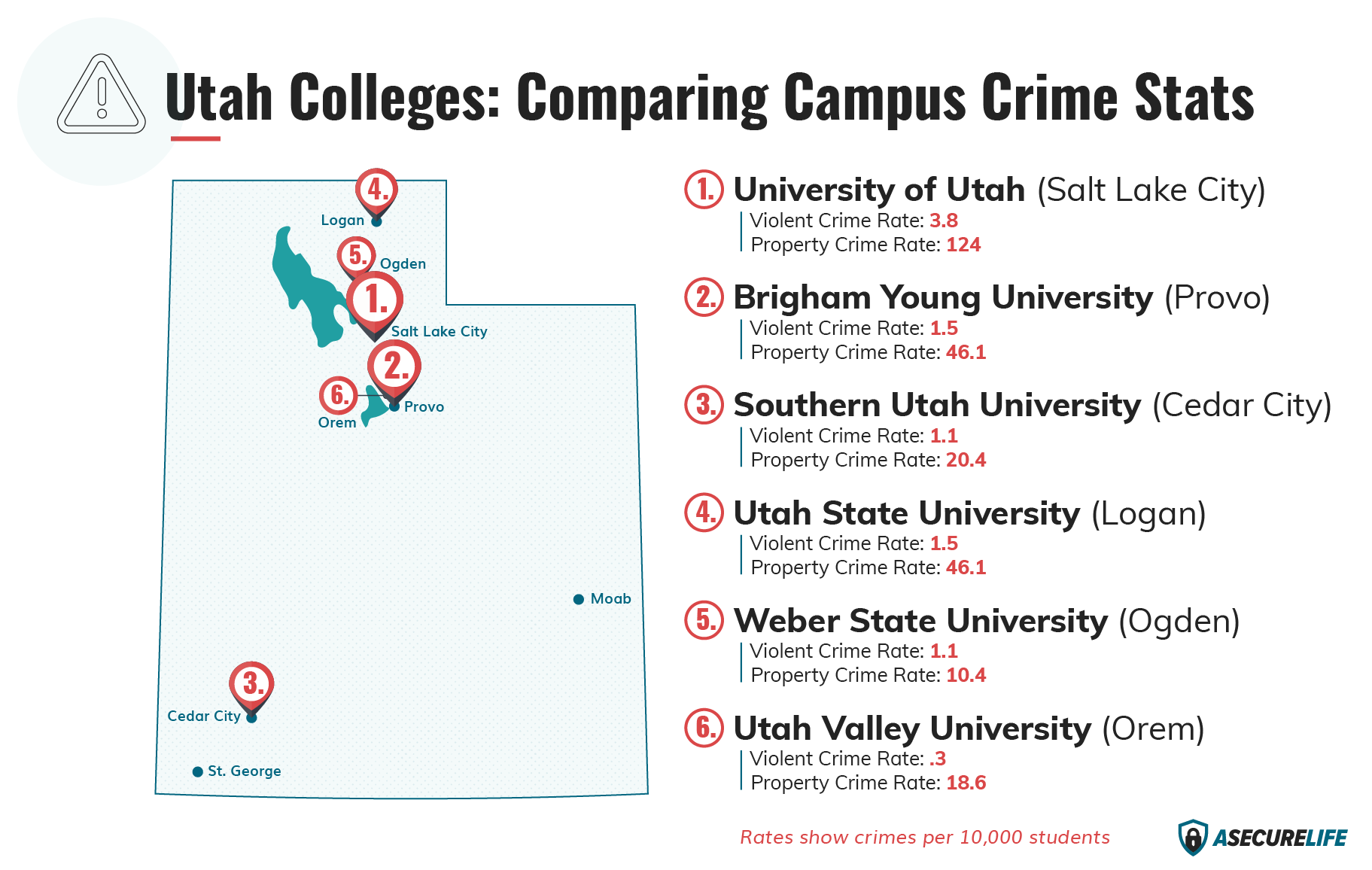When applying for college, high school juniors and seniors look at academic requirements, financing, housing, available majors, school size, extracurricular programs, and more. But they may not be looking enough at the safety measures potential schools offer.
ASecureLife’s team is based in Salt Lake City, so we got curious about which major Utah colleges are most prone to crime. We also took a look at how these universities are keeping their students safe. Keep reading to learn more about which Utah college campuses have the most crime and what their administrations are doing to crack down on it.












